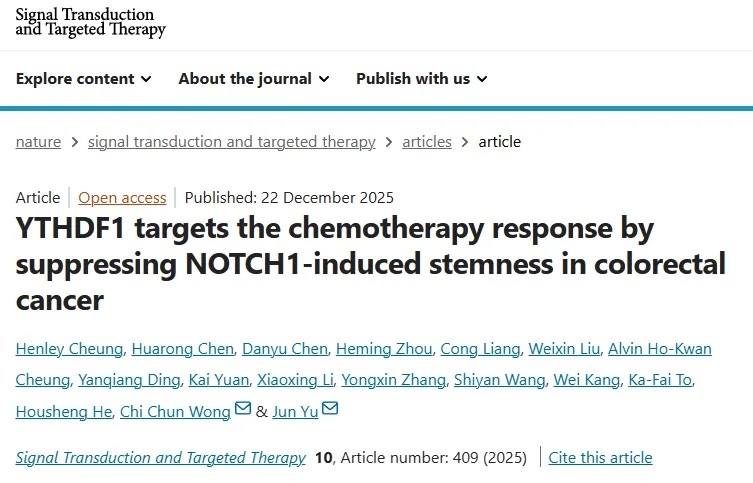mBio:特殊基因的发现或可开发出新型抗菌疗法
| 导读 | <img class="aligncenter" src="http://www.bioon.com/biology/UploadFiles/201209/2012091523591523.jpg" alt="" width="297" height="269" border="0&... |
<img class="aligncenter" src="http://www.bioon.com/biology/UploadFiles/201209/2012091523591523.jpg" alt="" width="297" height="269" border="0" />
<p style="text-align: left;" align="center"><span style="text-align: left;">近日,来自生物医学科学家的最新研究消息,一些新型的对耐药细菌生长有致命影响的基因被发现了。这不仅仅为治疗人类细菌性感染提供了新的靶点,而且揭示了实验室传统的研究并不是最好的发现抗微生物制剂的方法。相关研究成果刊登在了近期的杂志</span><em style="text-align: left;">mBio</em><span style="text-align: left;">上。</span></p>
<p align="center"><span style="font-family: 楷体_GB2312; font-size: small;"><!--more--></span></p>
鲍氏不动杆菌(A. baumannii)是一种依赖于细菌数量的医院获得性感染细菌,其对于重病病人具有致死风险。研究者Timothy C. Umland表示,鲍氏不动杆菌可以在医院的环境中生存,而且难以清除,因此其会引发健康相关的感染性疾病。
研究小组设计出了一种遗传筛选技术,来鉴别人类腹水中鲍氏不动杆菌生存和生长完全所需的基因,人类腹水是一种可以积累一系列病理学表现的潜在的体液物质。研究者发现了18个未知的基因,这些基因并没有在数据库中,但是其在实验室条件下对细菌生长并不是必须的。
这些新发现的基因并不仅仅为抵御鲍氏不动杆菌提供了有价值的靶点,而且这些基因的识别或许和其它的革兰氏阴性菌感染直接相关。研究者说道,截止到现在,我们的计算机模型揭示了新发现的基因对于革兰氏阴性菌感染是保守的,这就意味着其可以作为新型的靶向药物靶点来开发出抵御耐药性细菌的策略。这项研究由美国远程医疗和推进技术研究中心等机构支持。
编译自:<a title="" href="http://www.sciencedaily.com/releases/2012/09/120914191649.htm" target="_blank">Discovery of Essential Genes for Drug-Resistant Bacteria Reveals New, High-Value Drug Targets</a>
<div id="ztload">
<div></div>
<div>
<div>
<img src="http://www.bioon.com/biology/UploadFiles/201209/2012091600023068.jpg" alt="" width="113" height="149" border="0" />
<a title="" href="http://dx.doi.org/doi:10.1128/%E2%80%8BmBio.00113-12" target="_blank">doi:10.1128/mBio.00113-12</a>
PMC:
PMID:
</div>
<div>
<br/><strong>In Vivo-Validated Essential Genes Identified in Acinetobacter baumannii by Using Human Ascites Overlap Poorly with Essential Genes Detected on Laboratory Media</strong><br/>
Timothy C. Umlanda,b, L. Wayne Schultza,b, Ulrike MacDonaldc,d,e, Janet M. Beananc,d,e, Ruth Olsonc,d,e, and Thomas A. Russoc,d,e,f
A critical feature of a potential antimicrobial target is the characteristic of being essential for growth and survival during host infection. For bacteria, genome-wide essentiality screens are usually performed on rich laboratory media. This study addressed whether genes detected in that manner were optimal for the identification of antimicrobial targets since the in vivo milieu is fundamentally different. Mutant derivatives of a clinical isolate of Acinetobacter baumannii were screened for growth on human ascites, an ex vivo medium that reflects the infection environment. A subset of 34 mutants with unique gene disruptions that demonstrated little to no growth on ascites underwent evaluation in a rat subcutaneous abscess model, establishing 18 (53%) of these genes as in vivo essential. The putative gene products all had annotated biological functions, represented unrecognized or underexploited antimicrobial targets, and could be grouped into five functional categories: metabolic, two-component signaling systems, DNA/RNA synthesis and regulation, protein transport, and structural. These A. baumannii in vivo essential genes overlapped poorly with the sets of essential genes from other Gram-negative bacteria catalogued in the Database of Essential Genes (DEG), including those of Acinetobacter baylyi, a closely related species. However, this finding was not due to the absence of orthologs. None of the 18 in vivo essential genes identified in this study, or their putative gene products, were targets of FDA-approved drugs or drugs in the developmental pipeline, indicating that a significant portion of the available target space within pathogenic Gram-negative bacteria is currently neglected.
<br/>来源:生物谷
</div>
</div>
</div>
<p style="text-align: left;" align="center"><span style="text-align: left;">近日,来自生物医学科学家的最新研究消息,一些新型的对耐药细菌生长有致命影响的基因被发现了。这不仅仅为治疗人类细菌性感染提供了新的靶点,而且揭示了实验室传统的研究并不是最好的发现抗微生物制剂的方法。相关研究成果刊登在了近期的杂志</span><em style="text-align: left;">mBio</em><span style="text-align: left;">上。</span></p>
<p align="center"><span style="font-family: 楷体_GB2312; font-size: small;"><!--more--></span></p>
鲍氏不动杆菌(A. baumannii)是一种依赖于细菌数量的医院获得性感染细菌,其对于重病病人具有致死风险。研究者Timothy C. Umland表示,鲍氏不动杆菌可以在医院的环境中生存,而且难以清除,因此其会引发健康相关的感染性疾病。
研究小组设计出了一种遗传筛选技术,来鉴别人类腹水中鲍氏不动杆菌生存和生长完全所需的基因,人类腹水是一种可以积累一系列病理学表现的潜在的体液物质。研究者发现了18个未知的基因,这些基因并没有在数据库中,但是其在实验室条件下对细菌生长并不是必须的。
这些新发现的基因并不仅仅为抵御鲍氏不动杆菌提供了有价值的靶点,而且这些基因的识别或许和其它的革兰氏阴性菌感染直接相关。研究者说道,截止到现在,我们的计算机模型揭示了新发现的基因对于革兰氏阴性菌感染是保守的,这就意味着其可以作为新型的靶向药物靶点来开发出抵御耐药性细菌的策略。这项研究由美国远程医疗和推进技术研究中心等机构支持。
编译自:<a title="" href="http://www.sciencedaily.com/releases/2012/09/120914191649.htm" target="_blank">Discovery of Essential Genes for Drug-Resistant Bacteria Reveals New, High-Value Drug Targets</a>
<div id="ztload">
<div></div>
<div>
<div>
<img src="http://www.bioon.com/biology/UploadFiles/201209/2012091600023068.jpg" alt="" width="113" height="149" border="0" />
<a title="" href="http://dx.doi.org/doi:10.1128/%E2%80%8BmBio.00113-12" target="_blank">doi:10.1128/mBio.00113-12</a>
PMC:
PMID:
</div>
<div>
<br/><strong>In Vivo-Validated Essential Genes Identified in Acinetobacter baumannii by Using Human Ascites Overlap Poorly with Essential Genes Detected on Laboratory Media</strong><br/>
Timothy C. Umlanda,b, L. Wayne Schultza,b, Ulrike MacDonaldc,d,e, Janet M. Beananc,d,e, Ruth Olsonc,d,e, and Thomas A. Russoc,d,e,f
A critical feature of a potential antimicrobial target is the characteristic of being essential for growth and survival during host infection. For bacteria, genome-wide essentiality screens are usually performed on rich laboratory media. This study addressed whether genes detected in that manner were optimal for the identification of antimicrobial targets since the in vivo milieu is fundamentally different. Mutant derivatives of a clinical isolate of Acinetobacter baumannii were screened for growth on human ascites, an ex vivo medium that reflects the infection environment. A subset of 34 mutants with unique gene disruptions that demonstrated little to no growth on ascites underwent evaluation in a rat subcutaneous abscess model, establishing 18 (53%) of these genes as in vivo essential. The putative gene products all had annotated biological functions, represented unrecognized or underexploited antimicrobial targets, and could be grouped into five functional categories: metabolic, two-component signaling systems, DNA/RNA synthesis and regulation, protein transport, and structural. These A. baumannii in vivo essential genes overlapped poorly with the sets of essential genes from other Gram-negative bacteria catalogued in the Database of Essential Genes (DEG), including those of Acinetobacter baylyi, a closely related species. However, this finding was not due to the absence of orthologs. None of the 18 in vivo essential genes identified in this study, or their putative gene products, were targets of FDA-approved drugs or drugs in the developmental pipeline, indicating that a significant portion of the available target space within pathogenic Gram-negative bacteria is currently neglected.
<br/>来源:生物谷
</div>
</div>
</div>
 腾讯登录
腾讯登录
还没有人评论,赶快抢个沙发